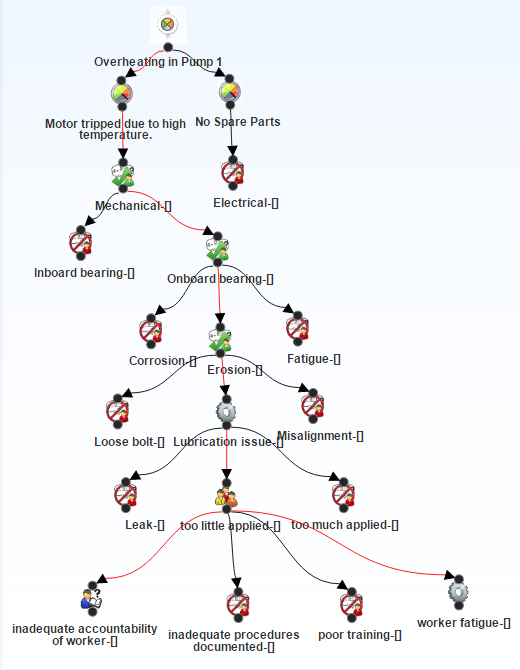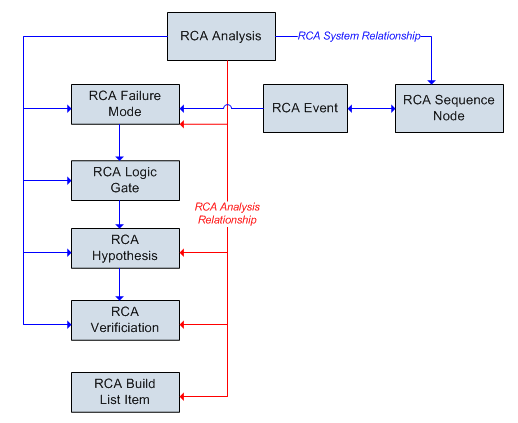The Logic Tree lets you represent visually the events that are associated with a failure and the cause-and-effect relationships that may have led to a failure event. The structure of the Logic Tree is hierarchical so that you can easily reference which event caused what effect. Each cause or effect is represented by a labeled icon, called a node. You can add nodes to the Failure Event node that represent components of the Root Cause Analysis. For example, if you define the Failure Event node as a fire, in the Logic Tree, you would add to the Failure Event node downstream nodes that represent all the possible causes for the failure event.
The following list provides the types of nodes that you can use in a Logic Tree Diagram:
| Icon | Node |
|---|---|
|
|
Failure Event |

|
Failure Mode |
|
|
Hypothesis |
 or or  |
Logic Gate |
Each node has an associated, which participates in a predecessor-successor relationship. For example, each Failure Mode node that appears in the Logic Tree has an associated RCA Failure Mode that is linked to the root RCA Event. Additionally, for each Hypothesis node that appears in the Logic Tree, an associated RCA Hypothesis exists that is linked to the predecessor RCA Failure Mode and the root RCA Event. Additionally, when you add a node to the Logic Tree, a link is created between that node and the RCA.
The following image illustrates the basic structure of the Logic Tree. For more information on each level of the Logic Tree, select the link that contains the name on the associated node in the image.


